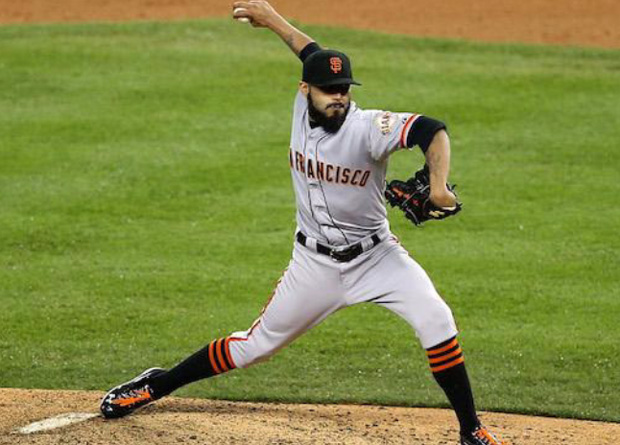| How to Throw Strikes Consistently |
| By: Mo Skelton
Provided by: STACK
If you're a pitcher, you must master throwing strikes. You have to be able to throw a strike in any count, to any batter, with runners on base, and with the game on the line. Throwing strikes will not only help you win games, it will reduce the risk of injury. Baseball injuries are often caused by repetitive stress. The more pitches you throw, the greater your injury risk. Throwing more strikes means you'll throw fewer pitches, thus lowering your risk. Here are some baseball training tips to help you throw strikes consistently. Develop Consistency To effectively throw strikes, you must develop a repeatable pattern to your delivery. • The height of your leg kick must remain constant with each pitch, every inning. • Your stride length must not get shorter during a game or throughout the season. • Your arm action, and specifically the height of your elbow, must be the same for all pitches. This is especially difficult for young pitchers, or pitchers learning a new pitch. Strength of the posterior rotator cuff and scapular muscles, good mobility of the scapula, and good thoracic mobility are critical. • Effort is not the key to velocity nor to consistently throwing strikes. It's important to understand mechanics and to train your ability to use your legs and trunk to drive your body forward, allowing your arm to be the conduit for your pitch location. Maintain Mental Toughness You will have outings in which you struggle with a pitch (or pitches) or your velocity. Battling and staying in the game to take pressure off the bullpen may be your saving grace on such days. To develop mental toughness, you must train hard. Once the season starts, it's too late for that. But you can still maintain your fitness level and your mental focus. Look back at the game. What went right and what went wrong? Re-evaluate each outing the day after, not immediately. Give yourself time to step away from the emotion and assess how it all went down. Understanding why you struggled will help you throw strikes more consistently in the future. Understand Fatigue You're not at your best when you're fatigued. Fatigue definitely makes throwing strikes more difficult. Certain specific things can happen when a pitcher gets tired: 1. You lose peripheral vision. Visual clarity is poor, making it difficult to throw. A pitcher in better shape can see better. A better conditioned pitcher will perform better later in the game. 2. Your arm slows down during your follow through. A fatigued rotator cuff slows you down and puts you at greater risk for injury. One way to prevent this is to go light on pre-game rotator cuff exercises. Once the rotator cuff fatigues, the humeral head (the top of the arm bone) migrates up, which can cause pinching of the rotator cuff muscles and lead to injury. 3. You don't flex at the hips. This creates a loss of velocity, and you must physically work harder to get it back. 4. You show weakness at the elbow, especially at the triceps muscles, and this predisposes you to elbow problems. 5. Your proprioception drains. Translation: Your throwing mechanics break down. 6. Your ability to follow through decreases. This is caused by loss of shoulder rotation and extension in the lead knee. Both of these lead to higher injury risk. Prepare Your Body and Recover This is especially important for young pitchers. You don't have pitching coaches at every practice and game. Warm up dynamically. Use a foam roller to loosen up your legs and shoulders. Use multiple-joint bodyweight exercises such as Squats, Lunges, and Push-Ups. Use mechanical drills to warm up and on days when you don't throw off the mound. The best pitchers in the world don't do mound work every day. Throwing off the mound is more stressful to the body. Do "dry" work on flat ground without a ball. Recovery after an outing is important. This is the best time to stretch. Stay Mobile Practice yoga, stretch the day after games and perform mobility drills. It's common for pitchers to lose mobility in their hips, quads, scapular muscles, hamstrings, ankles and throwing elbow. • Kneeling Lunge with Knee Flexion Stretch - for the quads • Knee Hugs - to keep your glutes loose • Straight Leg Marching - for hamstring mobility • Lateral Lunges - for the groin • Single-Leg Romanian Deadlifts - for the hamstrings • Supine Wall Slides - to keep the scapulae mobile • Lat Stretches - for the lats and the scapulae to remain mobile • Push-Up with a Plus - for the serratus muscle and the scapulae • Overhead Shrugs - more for upward mobility of the scapulae than the strength of the traps Work on Single-Leg Strength and Stability Pitching is a single-limb activity. Like sprinting, it is an explosive transition from one leg to the other. You want to begin the season with good strength, but definitely maintain that single-limb strength throughout the season. • Bulgarian Split Squats • Pistol Squats • Lunges • Single-Leg Lateral Plyo Jumps Sprint Sprint training in-season helps you maintain your explosiveness, improve your lower-body mobility and saves you from fatigue. Forgo long, slow jogs. They do not help to keep pitchers healthy in-season. Sprinting translates into effectiveness later in games and seasons. Master your curveball, increase your velocity, and learn to be deceptive with your off-speed pitches. Most of all, throw them for strikes. Train with the idea in mind to stay strong and mobile. Battle back from unsuccessful outings and stay consistent with your mechanics. The more strikes you throw with a purpose, the more wins you and your team will rack up. |







